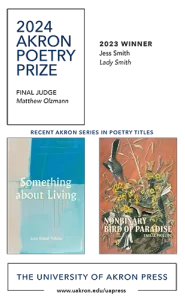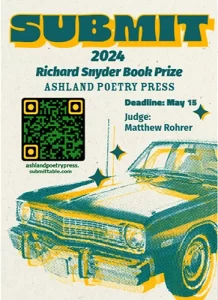Jelly Bucket – 2009
Number 1
2009
Annual
Kenneth Nichols
Jelly Bucket is a new journal produced by Eastern Kentucky University that gets its name, as editor Tasha Cotter explains in an introduction, from “archaic coalminer slang for lunch pail.” Cotter proclaims that the journal’s “only requirement is excellence.” Jelly Bucket’s aesthetic straddles these two aims interestingly, resulting in 185 pages of fiction, poetry and creative nonfiction that challenges the mind while feeding a reader’s base, human desires for story, wordplay and visual art.
Jelly Bucket is a new journal produced by Eastern Kentucky University that gets its name, as editor Tasha Cotter explains in an introduction, from “archaic coalminer slang for lunch pail.” Cotter proclaims that the journal’s “only requirement is excellence.” Jelly Bucket’s aesthetic straddles these two aims interestingly, resulting in 185 pages of fiction, poetry and creative nonfiction that challenges the mind while feeding a reader’s base, human desires for story, wordplay and visual art.
The apparent centerpiece and longest work in the journal is “Harmon’s Start” by Roger Pincus. The author faithfully and emotionally paints the long-gone world of baseball at the beginning of the twentieth century. This is a time long before steroids and Topps baseball cards and radio broadcasts, in the rough days when a pro ball field wasn’t immaculately maintained, when mid-season meant “the scrapes and scuffs of the players’ spikes had nearly obliterated the sharp separation of dirt from turf that had been there in April.” Jack Harmon (a great old-time ballplayer name) is a 36-year-old veteran pitcher with a dead arm he doesn’t know how to liven up. Harmon maintains his advantage over the batter by adding a dollop of Vaseline to the ball and scratching the horsehide with some sandpaper. The story chronicles what happens when a pitch gets away from a decent man with a fading curveball.
Richard Holinger’s short-short story “Layers” is brief but evocative. The first-person narrator of the story is instructed by a cautious mother to wear several layers of clothing to ward off the cold while walking the dog. Instead, the layers protect the narrator as he is nudged by happenstance along the road to maturity.
The four poems Kevin Pilkington has placed in the volume demonstrate the writer’s facility for writing poems that examine familiar subjects through an unanticipated lens. The narrator of “The River” is reading a book in a park when he juxtaposes the beautiful with the banal: “a page from a newspaper / grabs my ankle like a small dog.”
[www.jellybucket.org/]




